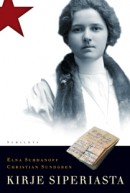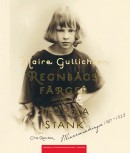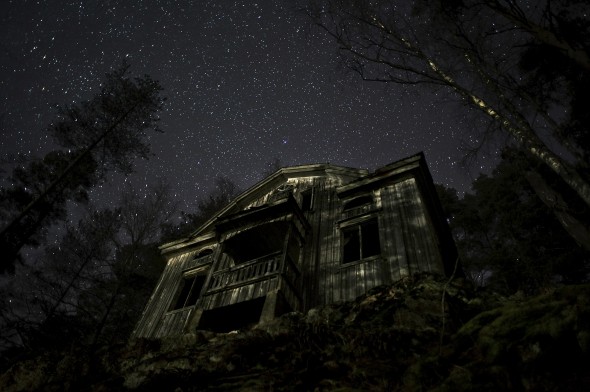Tag: memoirs
Nature’s own
22 April 2010 | Extracts, Non-fiction
As night falls, the silence is broken by pattering of small feet on the greying windowsill of an old, abandoned house: entire families may live under the rotten floorboards. Houses now inhabited not by humans but by wild animals are observed by Kai Fagerström and Heikki Willamo
Extracts from Viimeiset vieraat. Elämää autiotaloissa [The last visitors. Life in abandoned houses, Maahenki, 2010] by Kai Fagerström, Risto Rasa & Heikki Willamo. Text by Willamo, poems by Rasa, photographs by Fagerström and Willamo
Some thirty years later I found the badgers’ cottage again – it wasn’t the same one, but the mood of my childhood still floated there. Grey walls and a shingle roof, bare gaping windows, the door creaking on its single hinge. Oak tree in the yard, lilacs flourishing wild. The forest was rapidly reclaiming its own behind the cottage. The mounds of sand beside the wall bases showed prints of strong-clawed paws and a number of paths, hardened from use, led into the woods. More…
Elna Schdanoff & Christian Sundgren: Kirje Siperiasta [A letter from Siberia]
17 June 2009 | Mini reviews, Reviews
 Kirje Siperiasta [A letter from Siberia]
Kirje Siperiasta [A letter from Siberia]
Finnish translation by Paula Autio
Helsinki: Schildts, 2008. 233 p., ill.
ISBN 978-951-50-1783-3
€ 29, hardback
Swedish original: Brevet från Sibirien
Esbo: Schildts, 1997. 233 p., ill.
ISBN 951-50-0865-4
€ 29, hardback
Kirje Siperiasta is based on letters and memoirs covering a period of more than 80 years by Elna Schdanoff (Russian spelling Zhdanova, 1885–1977). Born in St Petersburg, Elna belonged to a Finland-Swedish family of industrial entrepreneurs in Russia. Her father was director of a Belgian mining and steel company, and after the revolution of 1917, her Russian husband Vadya Zhdanov became the first engineer in the Soviet steel industry. In the whirlwinds of the Revolution the Zhdanovs decided to remain in the Soviet Union. Vadya Zhdanov was executed as a spy during the Stalinist purges of 1938; Elna was sentenced to tens years of forced labour and deportation. According to the book’s editor, Zhdanova’s nephew Christian Sundgren, his aunt’s memoirs were not published in Finland when she wrote them because of the self-censorship of the Finnish press. In addition to the account of her imprisonment, the book generates interest with descriptions of Russian industry before and after the revolution. In the 1950s Zhdanova’s brother finally managed to obtain permission for his sister to travel to Finland where she remained for the rest of her life.
Maire Gullichsen: Regnbågsfärger, mörka stänk. Minnesvandringar 1907–1928 [Rainbow colours, dark shadows. Journeys in memory 1907–1928]
19 March 2009 | Mini reviews
 Maire Gullichsen: Regnbågsfärger, mörka stänk. Minnesvandringar 1907–1928
Maire Gullichsen: Regnbågsfärger, mörka stänk. Minnesvandringar 1907–1928
[Maire Gullichsen: Rainbow colours, dark shadows. Journeys in memory 1907–1928]
Red. [Ed. by] Cita Reuter
Helsingfors: Svenska Litteratursällskapet in Finland, 2008. 357 p., ill.
ISBN 978-951-583-165-1
€ 40, hardback
Maire Gullichsen, née Ahlström (1907–1990), an inheritor of the influential Ahlström timber, paper and metal company, was a prominent promoter of Finnish modern art, design and architecture and an art collector. In 1935, together with the architects Alvar and Aino Aalto and the journalist Nils-Gustav Hahl, she founded the design company Artek, which is still in business today. This book is based on her hitherto unpublished memoirs in which she recorded her life up to her marriage, to Harry Gullichsen, in 1928. Their home, Villa Mairea (1939) in the Ahlström family’s home district of Norrmark (Noormarkku) on Finland’s west coast, was designed by Alvar Aalto and remains one of the iconic examples of organic modernism. This richly illustrated volume gives a lively, detailed picture of a wealthy family during the tumultuous years of rapid industrialisation and struggle for independence in Finland. Maire Gullichsen’s daughter Professor Lilli Alanen and art historian Helen Woirhaye complement the author’s memoirs with articles providing information on the years after 1928.

